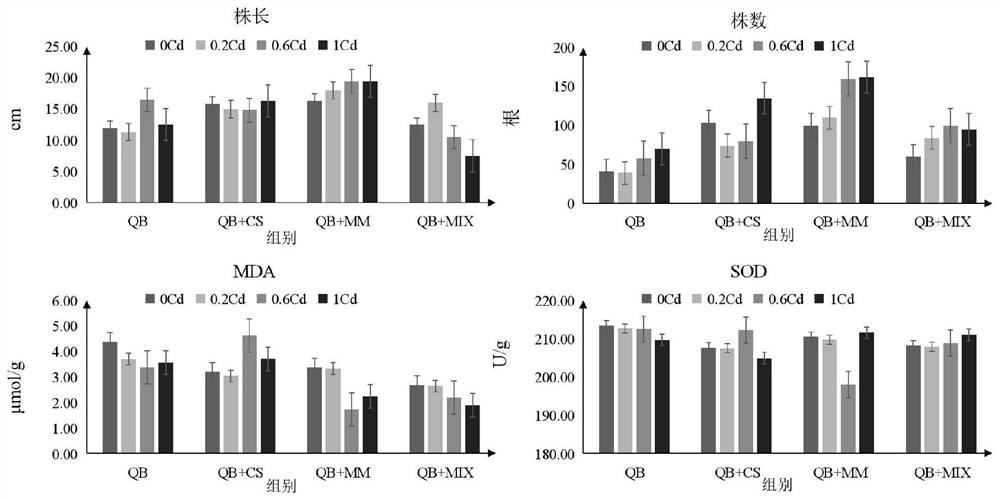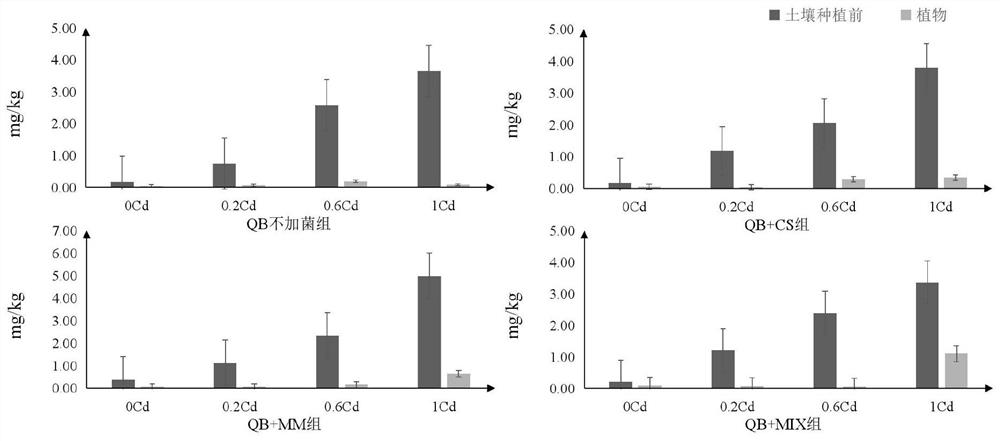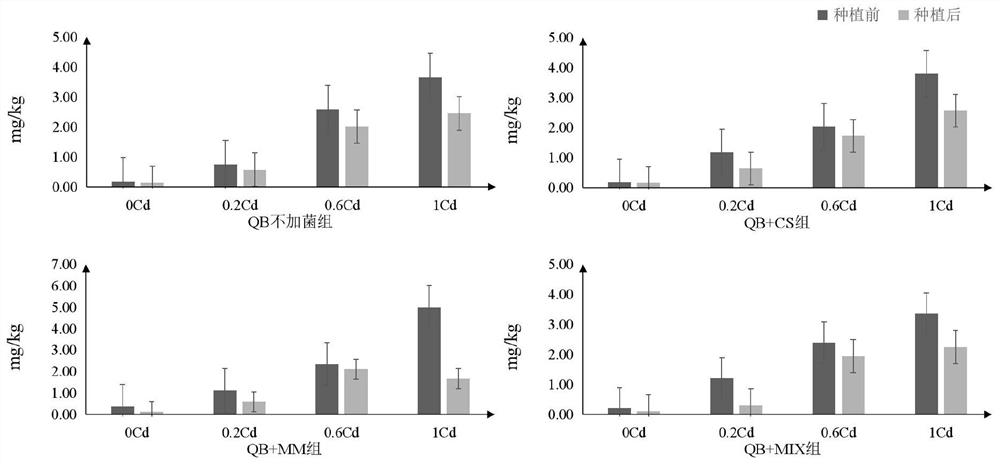Ionic type rare earth abandoned mining area soil remediation method
A technology of ion-type rare earth and restoration method, which is applied in the field of soil restoration in abandoned mining areas of ion-type rare earth, can solve problems such as water and soil loss, and achieve the effects of easy construction, good vegetation ecological restoration effect, huge application prospects and market demand
- Summary
- Abstract
- Description
- Claims
- Application Information
AI Technical Summary
Problems solved by technology
Method used
Image
Examples
Embodiment 1
[0039] Location: An abandoned rare earth tailings area (24°53′33.40"N, 115°40′34.76"E) in Shangjia Village, Xunwu County, Ganzhou City, Jiangxi Province. The altitude is 302m. The experimental site has a greenhouse with an area of about 256m 2 . The rare earth soil with low heavy metal cadmium pollution was selected as the experimental area. The heavy metal Cd content in the experimental site was 0.04mg / kg, which was lower than the background value of soil environment in Ganzhou City, which was 0.09mg / kg. Without polluting the local soil, Pot experiments were used when exogenous Cd was added.
[0040] Soil properties: The basic physical and chemical indicators of tailings are: total phosphorus 100.0mg / kg, total nitrogen 170.0mg / kg, nitrate nitrogen 7.12mg / kg, ammonium nitrogen 18.4mg / kg, organic matter 2.61g / kg, pH value 4.38, Lanthanum 608.0 mg / kg, Yttrium 114.0 mg / kg and Europium 16.8 mg / kg. Put the sterilized tailings sand and soil into the experimental pot (a plastic p...
Embodiment 2
[0073] Before planting, sterilize the abandoned rare earth tailings test soil, sprinkle a certain amount of sterilant (hydrogen peroxide, the same as above), then record the original root length of ramie, use CdCl 2 Configure mother liquor, add in the flowerpot that fills 2kg rare-earth tailings sand by gradient 0,0.2,0.6,1mg / kg (operation method is identical with embodiment 1), do three parallels at each concentration, plant after balancing one week, After balance, the Cd content in the soil was about 7.72mg / kg. Ramie seedlings were planted in the same manner as in Example 1, and it took 6 months from planting ramie seedlings to ramie growth, and then taking samples back to the laboratory for relevant testing. During the planting period, it is watered every morning and evening, and the water is taken from the running water at the foot of the local mountain. After 6 months, the ramie growth condition was good, and the root system had a good soil-fixing effect, and the flower ...
PUM
 Login to View More
Login to View More Abstract
Description
Claims
Application Information
 Login to View More
Login to View More - R&D
- Intellectual Property
- Life Sciences
- Materials
- Tech Scout
- Unparalleled Data Quality
- Higher Quality Content
- 60% Fewer Hallucinations
Browse by: Latest US Patents, China's latest patents, Technical Efficacy Thesaurus, Application Domain, Technology Topic, Popular Technical Reports.
© 2025 PatSnap. All rights reserved.Legal|Privacy policy|Modern Slavery Act Transparency Statement|Sitemap|About US| Contact US: help@patsnap.com



